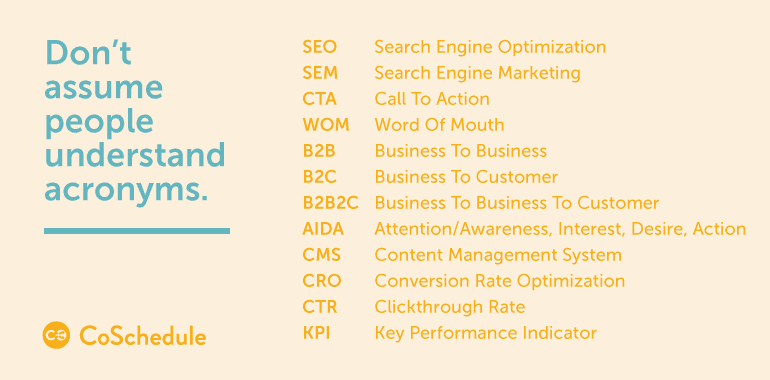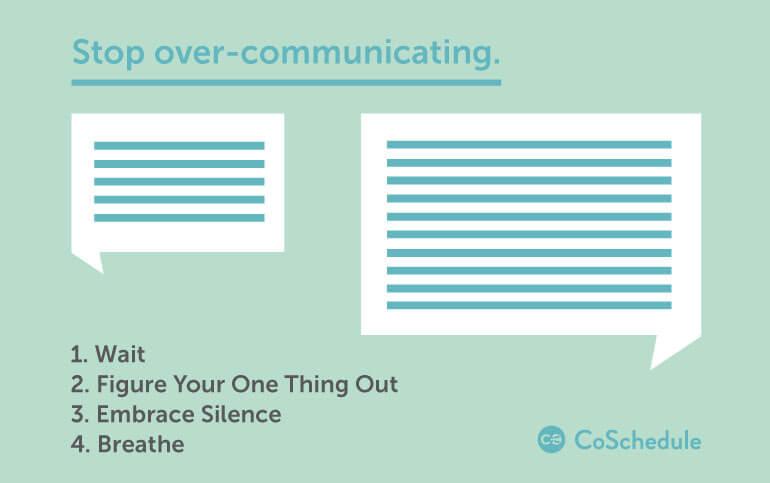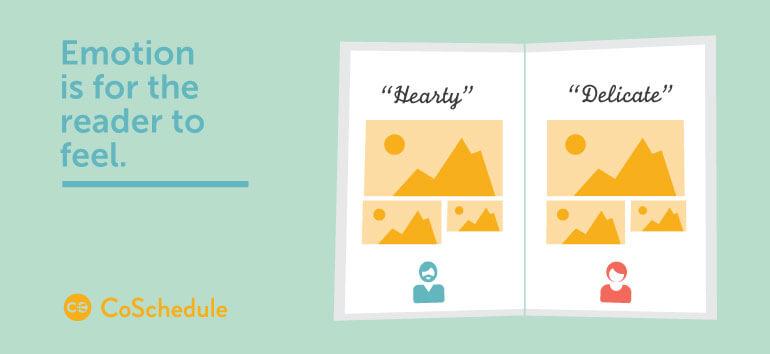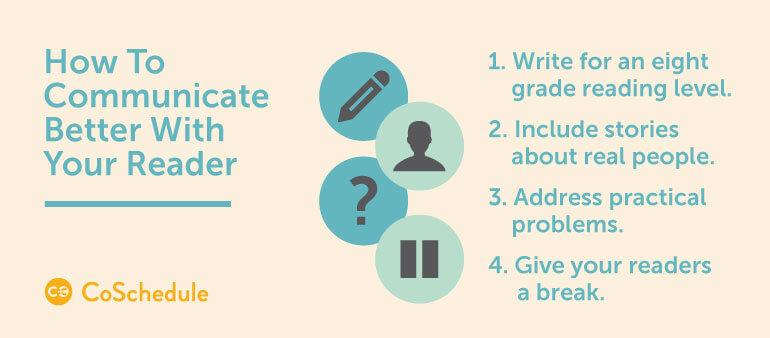How To Communicate Effectively With Your Blog Readers To Keep Them Reading
 How about writing your blog posts in a language the majority of your readers don't speak or understand? Yet that's what we bloggers do, sometimes. We write in a way that doesn't communicate well with our readers.
It's understandable, really.
A huge communication barrier writers face is that they can't tap into the power of non-verbal communication. We use tone of voice, gestures, and facial expressions to evaluate the meaning behind the words. We can tell if someone is being sarcastic, or is disinterested. But when the only communication tool you have is the written word, you have to learn to pull extra weight.
Writers must learn to communicate clearly with their blog readers. That's especially true if they want to keep their blog readers, and want those readers to do something.
How about writing your blog posts in a language the majority of your readers don't speak or understand? Yet that's what we bloggers do, sometimes. We write in a way that doesn't communicate well with our readers.
It's understandable, really.
A huge communication barrier writers face is that they can't tap into the power of non-verbal communication. We use tone of voice, gestures, and facial expressions to evaluate the meaning behind the words. We can tell if someone is being sarcastic, or is disinterested. But when the only communication tool you have is the written word, you have to learn to pull extra weight.
Writers must learn to communicate clearly with their blog readers. That's especially true if they want to keep their blog readers, and want those readers to do something.
How To Communicate Effectively With Your #Blog Readers via @JulieNeidlinger
Click To Tweet1. Don't Assume People Understand Acronyms And Initialisms
One of the more helpful habits I picked up as a newspaper reporter was the practice of always writing out the words that make up an acronym before referring to it only with the acronym in the rest of the article. You would include the acronym after the words, in parentheses, alerting the reader that from here on out, you'll just be using the acronym.Example: Search Engine Optimization (SEO)Content marketing copy can be full of acronyms. SEO, CTA—heck, I often stumble on a few that I don't know the meaning of. The field is changing so quickly, and buzzwords and phrases develop at a similar rate. I find if I'm not constantly reading blog posts on the topic, I am soon out of the loop.
 We've had readers who have asked, in the comments, what an acronym meant. They shouldn't have to do that. Even if you're certain your readers know what the acronym is, try to write it out the first mention so they don't have to feel stupid for not knowing.
We've had readers who have asked, in the comments, what an acronym meant. They shouldn't have to do that. Even if you're certain your readers know what the acronym is, try to write it out the first mention so they don't have to feel stupid for not knowing.
Don't make your readers guess what your acronyms mean. #blogging
Click To Tweet2. Don't Make Your Reader Feel Stupid
I mention the importance of defining acronyms because they are a part of the way we make our readers feel stupid. This is not a good thing. We can make blog readers feel stupid by assuming they have the backstory, the background knowledge—it's being in a group and realizing you're the only one who doesn't get the inside joke.Don't assume your #blog readers know your backstory. It can alienate them from reading your content.
Click To Tweet3. Stop Over-Communicating
For some of us, the fear of not communicating causes us to over-communicate. Why tell a story in five sentences when you can tell it in five paragraphs? I know this problem well, believe me. When trying to make a point, I want to be sure I hammer it home, and instead of using one concise example, I figure about ten will do.
Sometimes explaining isn't necessary and weighs down the message. Over-explaining isn't necessary nearly every time. This can be true in both your blog copy as well as your responses on social media or in blog comments.
I know this problem well, believe me. When trying to make a point, I want to be sure I hammer it home, and instead of using one concise example, I figure about ten will do.
Sometimes explaining isn't necessary and weighs down the message. Over-explaining isn't necessary nearly every time. This can be true in both your blog copy as well as your responses on social media or in blog comments.
Never complain. Never explain. —Katharine Hepburn
- Wait. Don't respond immediately if you're involved in a conversation. Sleep on it. Time provides a new perspective.
- Figure out your one thing. If you were only allowed to say one thing, what would it be?
- Embrace silence. Silence is only uncomfortable for those who have not taken the time to understand it.
- Breathe. Don't fill the air with talking and noise. Don't fill the screen with meaningless words. Allow you and your reader to breathe.
4. Use Imagery That Has A Purpose
Content marketers know the drill: Have a hero image with all content because images will get noticed and shared more. Unfortunately, that can lead to sloppy image choices just to have an image. Ask yourself if the image or images you are going to use serve a purpose:
Unfortunately, that can lead to sloppy image choices just to have an image. Ask yourself if the image or images you are going to use serve a purpose:
- Does the image contradict the message of the content in any way?
- Does the image help illustrate the message of the content?
- Am I using too many images in my copy?
Images should support your content without distracting. #blogging
Click To Tweet5. Emotion Is For The Reader To Feel
Because you do not have the ability to show your reader the emotion you are feeling through your facial expressions or tone of voice, you have a bit more work to do to get them to feel the emotion you want from them. Think of a movie or show that makes you tear up. The music, the dialogue, the way the characters are behaving—these all help cue up sad feelings. When I write this post, I can tell you up and down that there's a soundtrack in a minor key playing, but it won't help. So I have to use words that trigger particular feelings. In the March 25, 2015, edition of the Wall Street Journal, an article highlighted how the words used on restaurant menus were aimed at attracting male or female diners.
In the March 25, 2015, edition of the Wall Street Journal, an article highlighted how the words used on restaurant menus were aimed at attracting male or female diners.
"The word 'hearty' is not a good thing for a woman," she says, "but it's a great thing for a man." Meanwhile, a dish described as "delicate" is likely to be a turnoff to a man craving meat. If a menu describes a meat entree by naming specific animal parts, it is apt to sound gory and unappetizing to many women, Dr. Capaldi Phillips says.Like a space-starved tweet on Twitter, the restaurant menus have to find the words that stir the emotion in the diner. They can't waste space and time telling the diner how they will feel if they eat it. You can tell your blog reader she should feel really good and excited about your blog post, but telling people how to feel is the best way to get them to feel... nothing. Even if you feel excited, your copy won't necessarily translate that well without work.
The reader feels the emotion, not you. Don't tell her how to feel. #blogging
Click To Tweet6. Approach Your Thesis Honestly
In most cases, your blog posts begin with a thesis or problem, and then the rest sets about solving or supporting that thesis. Lack of research and logical fallacies can become a problem in some posts that are contentiously asserting a strong opinion or plan of action. Logical fallacies crop up everywhere online, particularly in heated discussions among random people. When you have a lot riding on proving your point, it's easy to take any shot you can, even if it's a low shot. Frankly, I slip into logical fallacies all the time. Periodically reading about them and practicing the identification of them is helpful to me in my own writing as well as spotting them elsewhere.
There are so many of these logical fallacies, and they are so common online and on TV (just watch any episode of The Daily Show) that we are used to hearing them to the point that they become a way we think. They often sound clever and we struggle to contradict or disprove them.
When you set out to state a theory and prove a point, be honest about it. If you cannot prove your theory with great research or reasoning, it doesn't mean you can't still write. You simply must write in a way that doesn't try to insinuate and insist that your theory is solid.
Frankly, I slip into logical fallacies all the time. Periodically reading about them and practicing the identification of them is helpful to me in my own writing as well as spotting them elsewhere.
There are so many of these logical fallacies, and they are so common online and on TV (just watch any episode of The Daily Show) that we are used to hearing them to the point that they become a way we think. They often sound clever and we struggle to contradict or disprove them.
When you set out to state a theory and prove a point, be honest about it. If you cannot prove your theory with great research or reasoning, it doesn't mean you can't still write. You simply must write in a way that doesn't try to insinuate and insist that your theory is solid.
Avoid logical fallacies to build credible content. #blogging
Click To Tweet7. Clarity Is For More Than Just Diamonds
Clarity is the god of writing. Clearly stating your goal. Clearly stating your thesis. Clearly telling your reader what to do. Clearly proving a point. Clearly summing up research and outside links for the reader who decides to trust and not verify. Do you know what the best indicator is for a blog post that won't get to the point? It's a blog post where you don't actually know the point.
One of the nice things about using CoSchedule as a team is that there is the ability to discuss and comment on the idea of the post before it actually goes into draft. That way, I know before I write where I am headed.
Sometimes it veers.
Sometimes I can make that work.
But I always have an end goal in mind to work toward.
"I'm gonna write about writing" is not a useful thought to have in mind when headed into a 2,000 word blog post.
Clarity is achieved through great editing, great language—all of the usual suspects—but it's also heavily reliant on a close-ended idea. You know where you want to go. You write in that direction. You get there.
Do you know what the best indicator is for a blog post that won't get to the point? It's a blog post where you don't actually know the point.
One of the nice things about using CoSchedule as a team is that there is the ability to discuss and comment on the idea of the post before it actually goes into draft. That way, I know before I write where I am headed.
Sometimes it veers.
Sometimes I can make that work.
But I always have an end goal in mind to work toward.
"I'm gonna write about writing" is not a useful thought to have in mind when headed into a 2,000 word blog post.
Clarity is achieved through great editing, great language—all of the usual suspects—but it's also heavily reliant on a close-ended idea. You know where you want to go. You write in that direction. You get there.
8. Think Of Reader's Digest
Reader's Digest has been popular for more than 80 years. While it might not make prestigious lists, this little magazine has made its way into homes for almost a century and has brought with it stories and articles of all types. I grew up in a house that received Reader's Digest, and I would read it cover to cover, from when I was young until I was an adult. How did this magazine communicate so well across such a broad range of readers? According to Internet Evangelism Today, you can break down their success as follows:
I grew up in a house that received Reader's Digest, and I would read it cover to cover, from when I was young until I was an adult. How did this magazine communicate so well across such a broad range of readers? According to Internet Evangelism Today, you can break down their success as follows:
- It is written at the level of a 13-year-old, but does not talk down to adults.
- It has a high percentage of stories that are about people. These stories are told dramatically, and use plenty of quoted speech.
- It addresses practical problems (felt needs), helping improve people's lives.
- There is humor mixed in with serious articles.
How Will You Communicate Better With Your Blog Readers?
This is by no means the end-all list of how to communicate with readers in your writing, and you might not even put all of them to use in one post. I'm willing to bet many of you have your own tricks and tips. What do you consider to be the most problematic writing technique that keeps readers from latching onto content? And, what do you think is the best way to communicate with your blog readers? As a reader myself, I choke on posts that seem too similar or too salesy. I want to feel that what I am reading is genuine and not contrived for my benefit. I don't want to feel stupid and, consequently, excluded. I want to feel like I'm reading a blog where I belong, where the author is talking to people like me. These tips are just a few ways I try to do that in my own writing.8 Ways To Communicate Better With Your Blog Readers
Click To Tweet

